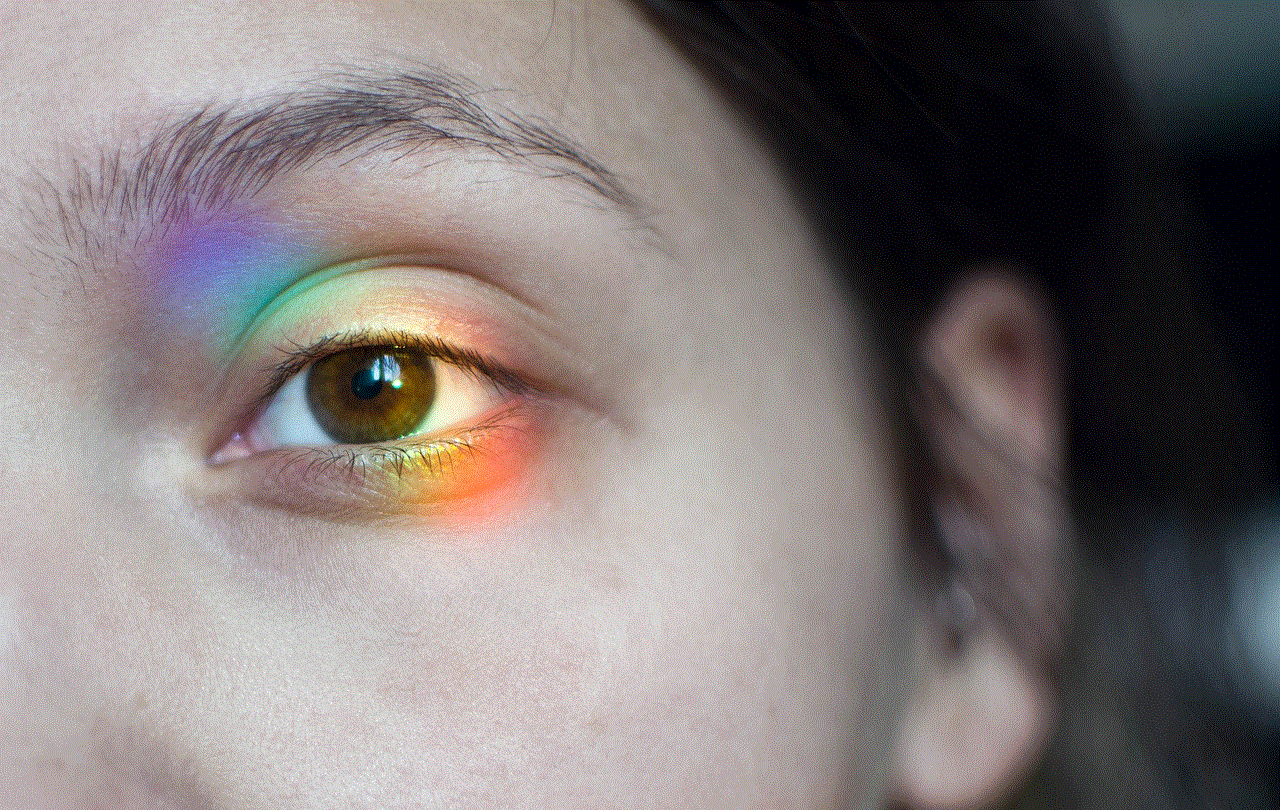how to turn on geolocation on iphone
Geolocation is a feature on your iPhone that allows apps and websites to access your current location. This can be incredibly useful for navigation, finding local businesses, and connecting with friends and family. However, some users may not be aware of how to turn on geolocation on their iPhone. In this article, we will guide you through the steps to enable geolocation and explain the benefits of using this feature.
Before we dive into the steps, let’s first understand what geolocation is and how it works. Geolocation is a technology that uses data from your device’s GPS, Wi-Fi, and cellular network to determine your exact location. This information is then used by apps and websites to provide location-based services. For example, if you are using a maps app, geolocation will help pinpoint your current location and provide directions to your desired destination.
Now, let’s move on to the steps to enable geolocation on your iPhone. The process may vary slightly depending on the iOS version you are using, but overall, it is a straightforward process. Here’s how you can do it:
Step 1: Open the Settings app on your iPhone.
Step 2: Scroll down and tap on Privacy.
Step 3: Next, tap on Location Services.
Step 4: Make sure that the toggle next to “Location Services” is turned on. This will enable geolocation for all apps and services on your iPhone.
Step 5: Scroll down to see a list of all the apps that have requested access to your location. You will see three options next to each app – “Never”, “While Using the App”, and “Always”.
Step 6: Choose the option that best suits your needs for each app. For example, you can select “Always” for navigation apps like Google Maps or Waze, so they can always access your location for accurate directions.
Step 7: If you want to turn off geolocation for a particular app, simply tap on the app and select “Never”.
By following these steps, you can easily enable geolocation on your iPhone. However, there are a few things you should keep in mind while using this feature. Firstly, enabling geolocation can drain your battery, so it’s essential to use it only when necessary. You can also enable the “Precise Location” toggle, which will use Wi-Fi and Bluetooth to improve location accuracy without draining your battery.
Secondly, you should be mindful of the apps and services that have access to your location. It’s always a good idea to review the list of apps and their location access settings regularly. If you come across an app that you don’t use or doesn’t need access to your location, it’s best to turn it off to protect your privacy.
Now that you know how to turn on geolocation on your iPhone let’s explore some of the benefits of using this feature.
1. Accurate Navigation:
One of the most significant advantages of enabling geolocation on your iPhone is accurate navigation. With the help of GPS and other location data, your device can pinpoint your exact location and provide accurate directions to your desired destination. This is incredibly useful when you are in a new place or trying to find a specific location.
2. Find Local Businesses:
Another benefit of using geolocation on your iPhone is the ability to find local businesses. With the help of location-based apps like Yelp or Google Maps, you can easily search for nearby restaurants, cafes, gas stations, and more. This feature is especially handy when you are traveling and need to find essential services in an unfamiliar area.
3. Connect with Friends and Family:
Geolocation can also help you stay connected with friends and family. Many social media apps and messaging services use your location to show you nearby friends and allow you to share your location with them. This can be helpful when you are meeting up with someone or trying to coordinate plans with a group.
4. Improved Personalization:
Enabling geolocation on your iPhone can also improve your overall user experience. Many apps and services use your location data to provide personalized recommendations and content. For example, you may see targeted ads for local businesses or events in your area. This can make your experience more relevant and tailored to your interests.
5. Emergency Services:
In case of an emergency, geolocation can be a lifesaver. With the help of this feature, emergency services can quickly locate your exact location and provide assistance. This is especially crucial if you are in an unfamiliar area or unable to communicate your location accurately.
6. Tracking Your Device:
If your iPhone gets lost or stolen, geolocation can help you track it down. You can use the “Find My” app on another device to locate your iPhone’s exact location. This can be incredibly useful in retrieving your device or preventing any potential theft.
In conclusion, geolocation is a handy feature that can enhance your overall iPhone experience. By following the simple steps mentioned above, you can easily enable it and reap its benefits. However, it’s essential to use this feature responsibly and be mindful of the apps and services that have access to your location. With geolocation enabled, you can enjoy accurate navigation, find local businesses, stay connected with friends and family, and much more. So, go ahead and turn on geolocation on your iPhone to make the most out of this fantastic technology.
what is in a crunchy roll
When it comes to popular Japanese cuisine, sushi is often the first thing that comes to mind. However, there is another dish that has been gaining popularity in recent years – crunchy rolls. These delicious rolls are made with a combination of crispy tempura batter and fresh ingredients, giving them a unique texture and flavor that sets them apart from traditional sushi rolls. In this article, we will explore the history, ingredients, and various types of crunchy rolls, and why they have become a must-try for sushi lovers all over the world.
History of Crunchy Rolls
The origin of crunchy rolls can be traced back to the United States, specifically to the state of California. It is said that the first crunchy roll was created in the late 1960s by a Japanese chef named Ichiro Mashita. He was working at a sushi restaurant in Los Angeles when he came up with the idea of combining tempura and sushi. The result was a roll with a crispy exterior and a soft and chewy interior, which was a hit among customers.
The popularity of crunchy rolls continued to grow throughout the 1970s and 1980s, especially in California. However, it wasn’t until the 1990s that they gained worldwide recognition when sushi restaurants started popping up in different parts of the world. Today, crunchy rolls are a staple in most sushi restaurants and are loved by people all over the globe.
Ingredients of Crunchy Rolls
The main ingredient of crunchy rolls is, of course, the tempura batter. Tempura is a Japanese dish that consists of battered and deep-fried seafood or vegetables. The batter used for tempura is typically made with flour, water, and eggs, resulting in a light and crispy texture. The tempura batter used in crunchy rolls is often mixed with panko breadcrumbs, giving the rolls an even crunchier texture.
Apart from the tempura batter, crunchy rolls also contain a variety of fillings, just like traditional sushi rolls. Some popular ingredients used in crunchy rolls include avocado, cucumber, crab meat, shrimp, and tuna. However, what sets them apart is the addition of tempura-battered ingredients such as shrimp tempura, crab tempura, or vegetable tempura. The combination of fresh and crispy ingredients gives crunchy rolls a unique and delicious taste.
Types of Crunchy Rolls
There are several types of crunchy rolls, and the fillings and toppings used may vary based on the chef’s creativity and the restaurant’s specialty. However, some of the most popular and well-known types of crunchy rolls include the California Crunchy Roll, Spicy Tuna Crunchy Roll, and Caterpillar Crunchy Roll.
The California Crunchy Roll is a classic crunchy roll that is loved by many. It consists of avocado, crab meat, and cucumber, wrapped in seaweed and sushi rice, then topped with panko-battered shrimp. The Spicy Tuna Crunchy Roll, on the other hand, is a bit more adventurous and consists of spicy tuna, avocado, and cucumber, topped with deep-fried tempura flakes. Lastly, the Caterpillar Crunchy Roll is a unique and visually appealing roll, with its green outer layer made of avocado and the filling made of shrimp tempura, cucumber, and eel.
How to Make Crunchy Rolls
Making crunchy rolls may seem like a daunting task, but with the right ingredients and technique, it can be a fun and satisfying experience. To make crunchy rolls, you will need sushi rice, seaweed sheets, tempura batter, your choice of fillings, and a deep fryer or a pot of hot oil.
The first step is to prepare the sushi rice according to the package instructions. Once the rice is cooked, let it cool down before using it to make the rolls. Next, place a sheet of seaweed on a bamboo rolling mat, shiny side down. Spread the sushi rice evenly on the seaweed, leaving a 1-inch border on one end. Place your chosen fillings on top of the rice, then roll the mat tightly, pressing the ingredients together.



Next, it’s time to make the tempura batter. In a bowl, mix flour, water, and eggs until you get a smooth and thick batter. Dip the rolled sushi in the batter, making sure it is evenly coated. Then, carefully place it in the deep fryer or hot oil and fry until the tempura batter turns golden brown. Once done, remove the roll from the oil and let it cool for a few minutes before slicing it into bite-size pieces.
Serving and Enjoying Crunchy Rolls
Crunchy rolls are often served with soy sauce, wasabi, and pickled ginger, just like traditional sushi rolls. However, some restaurants also offer different types of dipping sauces, such as spicy mayo or eel sauce, to enhance the flavor of the rolls. The presentation of crunchy rolls is also an important aspect, with many chefs adding decorative elements such as sesame seeds, scallions, or tobiko (flying fish roe) on top.
To fully enjoy crunchy rolls, it is recommended to eat them immediately after they are served. This will ensure that the tempura batter remains crispy, and the ingredients are fresh and flavorful. The combination of the crispy tempura and the soft and chewy rice and fillings creates a perfect balance of textures and flavors, making each bite a delight for the taste buds.
Health Benefits of Crunchy Rolls
While sushi, in general, is considered a healthy meal, crunchy rolls may not be the best option for those watching their diet. The tempura batter used in crunchy rolls is deep-fried, making it high in calories and fat. However, the fillings used in crunchy rolls, such as fish, vegetables, and seaweed, are rich in nutrients and low in calories. To make crunchy rolls a healthier option, some restaurants offer baked or air-fried versions of the rolls, which are just as delicious but with fewer calories.
In addition, the omega-3 fatty acids present in fish used in crunchy rolls have numerous health benefits, including reducing the risk of heart disease and improving brain health. The use of seaweed in sushi also provides vitamins and minerals such as iodine, which is essential for thyroid function.
In Conclusion
In recent years, crunchy rolls have become a popular dish that has captured the hearts and taste buds of people all over the world. From its humble origins in California to its widespread popularity today, crunchy rolls have come a long way. With its unique texture, delicious flavors, and endless variations, it’s no wonder that they have become a must-try for sushi lovers. So the next time you visit a sushi restaurant, be sure to order a plate of crunchy rolls and experience the perfect balance of crispiness and freshness in each bite.
memory loss in teens
Memory loss is a common occurrence in people of all ages, but it can be particularly concerning when it affects teenagers. As adolescents are going through a critical period of brain development, any disruptions to their memory can have long-lasting effects on their cognitive abilities and overall well-being. In this article, we will explore the causes, symptoms, and potential treatments for memory loss in teens.
What is Memory Loss?
Memory loss, also known as amnesia, is the inability to recall or retain information. It can range from mild forgetfulness to severe memory impairment. Memory loss can be temporary or permanent, and it can affect different types of memory, such as short-term memory, long-term memory, or both.
Causes of Memory Loss in Teens
There are several potential causes of memory loss in teenagers. Some of the most common include:
1. Stress and Anxiety: Teenagers are under immense pressure to perform well academically, socially, and athletically. This can lead to high levels of stress and anxiety, which can affect their ability to concentrate and remember information.
2. Lack of Sleep: The teenage years are a time when the body is going through significant changes, and as a result, teens require more sleep than adults. However, due to busy schedules and the use of technology, many teens do not get enough sleep, which can impact their memory and cognitive function.
3. Substance Abuse: Substance abuse, including alcohol and drug use, can have a significant impact on memory in teens. These substances can alter brain chemistry and impair memory function.
4. Head Injuries: Teens are also at risk for head injuries, particularly if they are involved in sports or other high-impact activities. These injuries can damage the brain and result in memory loss.
5. Vitamin Deficiencies: Vitamin B1 (thiamine) and B12 (cobalamin) are essential for brain function and memory. Deficiencies in these vitamins can lead to memory loss in teens.
Symptoms of Memory Loss in Teens
The symptoms of memory loss in teens can vary depending on the cause and severity. Some common symptoms include:



1. Forgetfulness: Forgetting important dates, events, or tasks can be a sign of memory loss in teens. This can include forgetting to do homework or attend a scheduled appointment.
2. Difficulty Learning: Memory loss can also make it challenging for teens to acquire new information or skills. They may struggle to remember what they have learned in school or retain information for exams.
3. Confusion: Teens with memory loss may appear confused or disoriented, especially in situations where they are expected to recall information.
4. Mood Changes: Memory loss can also impact a teen’s mood, leading to irritability, frustration, or anxiety.
5. Difficulty with Everyday Tasks: Memory loss can make it challenging for teens to complete everyday tasks, such as getting dressed, preparing meals, or navigating familiar places.
Treatments for Memory Loss in Teens
The treatment for memory loss in teens will depend on the underlying cause. In some cases, addressing the root cause may be enough to improve memory function. For example, if stress or lack of sleep is the cause, learning stress management techniques and improving sleep habits may help.
In cases where memory loss is more severe or persistent, professional help may be necessary. Some potential treatments include:
1. Cognitive Behavioral Therapy (CBT): CBT is a type of talk therapy that can help teens identify and change negative thought patterns and behaviors that may contribute to memory loss.
2. Medications: In some cases, medications may be prescribed to help with memory loss, particularly if it is related to a medical condition such as ADHD or depression.
3. Memory Training: Memory training exercises and techniques can help teens improve their memory skills. These may include mnemonic devices, memory games, and other memory-enhancing activities.
4. Lifestyle Changes: Encouraging teens to make healthy lifestyle changes, such as getting enough sleep, eating a balanced diet, and exercising regularly, can also help improve memory function.
5. Supportive Environment: Creating a supportive and nurturing environment for teens can also play a significant role in managing memory loss. This can include ensuring they have a stable and consistent routine, providing positive reinforcement, and reducing stressors in their life.
Preventing Memory Loss in Teens
While some causes of memory loss in teens may be out of their control, there are steps they can take to prevent memory loss. These include:
1. Getting Enough Sleep: Encouraging teens to get the recommended 8-10 hours of sleep each night can help improve memory function.
2. Healthy Diet: A balanced and nutritious diet can provide the vitamins and minerals necessary for optimal brain function and memory.
3. Exercise: Regular physical activity can improve blood flow to the brain and promote the growth of new brain cells, which can help improve memory.
4. Managing Stress: Teaching teens healthy ways to manage stress can help prevent memory loss. This can include techniques such as deep breathing, meditation, and journaling.
5. Limiting Substance Use: Educating teens about the dangers of substance abuse and encouraging them to make healthy choices can help prevent memory loss related to drug and alcohol use.
Final Thoughts



Memory loss in teens can be a concerning issue, but it is not something that should be ignored. If you notice your teen experiencing symptoms of memory loss, it is essential to seek professional help to determine the cause and develop an appropriate treatment plan. With the right support and treatment, teens can improve their memory function and lead healthy and fulfilling lives.